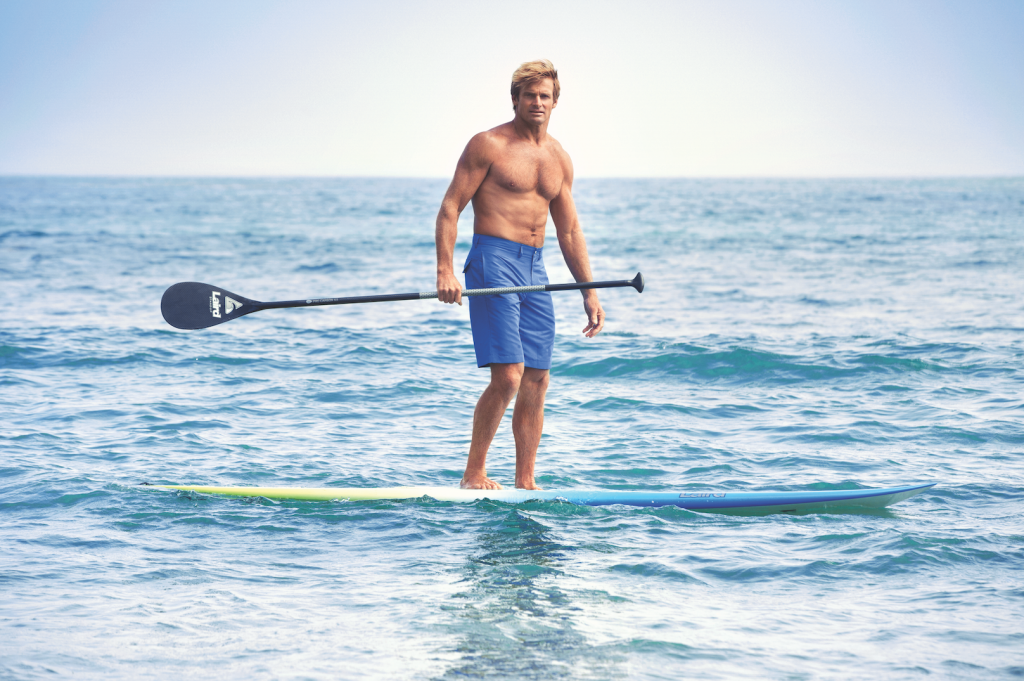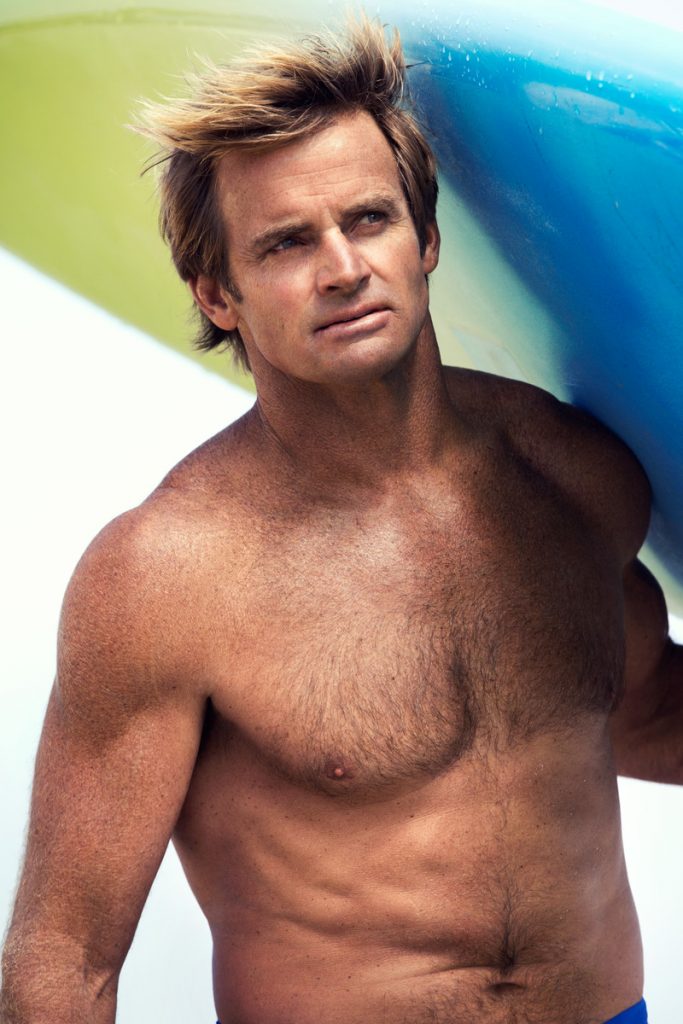
One morning I heard the monster waves stomping off the North Shore of Maui where I live. The big ones often kick up during the night. You lie in your bed and try to sleep, but you can feel them building. When an 80-footer breaks, the foundation of the house trembles. That’s why I live here: The waves come to you.
Word spread pretty fast that huge sets were forming. I phoned my longtime surfing partner Brett Lickle and headed for the beach. Brett had been a member of the crew of big-wave surfers with whom I worked on developing the technique of using personal watercraft to tow a surfer out between waves, which lets you get in there to ride waves big enough to sink ships. A lot of my best rides on the biggest waves have been caught on camera. But this morning, high winds, rain and lack of visibility grounded helicopters. No cameras today.
Brett and I rode out from Baldwin Beach Park on a three-seat watercraft. A little less than a mile offshore, we reached the Outer Sprecks break. The waves rolled up in immense swells, producing faces ranging in height from 50 to 80 feet. Imagine a 10-story building hurtling at you at 30 miles an hour, followed, every 30 seconds, by another 10-story building.
That morning there were no wipeouts, just one superlative ride after another. We surfed through the morning, took a lunch break, and then headed back out. The waves rose even higher than in the morning and were bunched even closer. Then Brett towed me into a goliath, an 80-footer, at least, as big a wave as we had ever seen.
The tow-in and release proceeded smoothly, but I hit the wave a shade high on its face. I tried to go lower and tuck into the barrel, but I adjusted a beat too late. Looking back, Brett and I did everything right. But sometimes in the ocean, being right isn’t enough. I pulled out, jerking my board to the right and jumping out of the back of the wave, escaping the crush of water.
I bobbed in the swell, and Brett swooped in on the watercraft to pick me up. The next wave bore down on us, so the instant I was aboard, Brett tore for shore. But I could hear the roar of the wave behind us. A split second later, we were swatted off the watercraft as if by a giant hand.
The wave held me underwater for 30 seconds. I couldn’t move my arms or legs. I tried not to panic and waited for my flotation vest to lift me to the surface. But holding your breath for 30 seconds when your heart is hammering 200 beats a minute is like holding it for five minutes when you’re sitting in a chair.
Four giant waves pummeled us. Finally, we were driven out of the crash zone. Brett floated about 50 feet away from me, but the watercraft was a quarter mile away. I looked over at Brett, and his face was gray. “I need a tourniquet,” he shouted.
The aluminum fin of a spare board had sliced open the back of Brett’s left leg from the knee to the ankle. Blood gushed from the cut, clouding the water. I immediately thought, It must have opened up his femoral artery.
No other surfers were in sight, and we were half a mile offshore. I realized it was all on me. I stripped off my wetsuit and tied it around his leg above the wound. Then I swam in a dead sprint to the watercraft, thinking all the way, Brett’s bleeding to death. And all that blood will bring in the tiger sharks. Man, what will I tell his wife? What will I tell his kids?
I got to the watercraft and fired it up. The onboard radiophone still worked. So there I was, stark naked, breathless and reeling from the sprint to the watercraft and the beating I took from the waves, calling 911 as I rushed back to pick up Brett.
Sharks hadn’t found him yet, but he didn’t look any better. I raced into shore with one arm around him; an ambulance met us on the beach. It turned out that Brett’s femoral artery was intact, but the wound would eventually require 53 staples to close.
Once the ambulance took Brett away and I knew he’d be OK, I turned and looked out to where the monster waves were still breaking. I had to go back out there. Immediately. It might seem strange, but I live by a certain code. I don’t compromise it. Going back out would honor my fallen friend. It would also address any lingering fears. I see fear as a healthy, constructive emotion. In fact, as part of my training regimen, I’ve set a goal of being frightened once a day. I went back out there and rode. And it properly closed a day that was both terrible and triumphant.
See, I look at my life as following two lines on a graph. One line shows my physical systems, stuff like conditioning, VO2 max, and fast-twitch muscle fibers, and that line is either flattening or very gradually declining as I get older. The other line shows the intangibles—maturity, experience, judgment, passion, perspective—steadily increasing. The two lines cross at an interesting place, and I regard that place as my peak. It’s not a point, but a plateau. Your peak isn’t really a product of your body, but of your enthusiasm. I intend to live on that plateau for a long, long time.
Take Every Wave: Laird Hamilton will be screened on Friday, August 4, 8: 30 PM at Gurney’s Montauk Resort & Spa, as part of the Hamptons International Film Festival Summer Docs series. Alec Baldwin and David Nugent lead a conversation after the screening with Hamilton and director Rory Kennedy.






